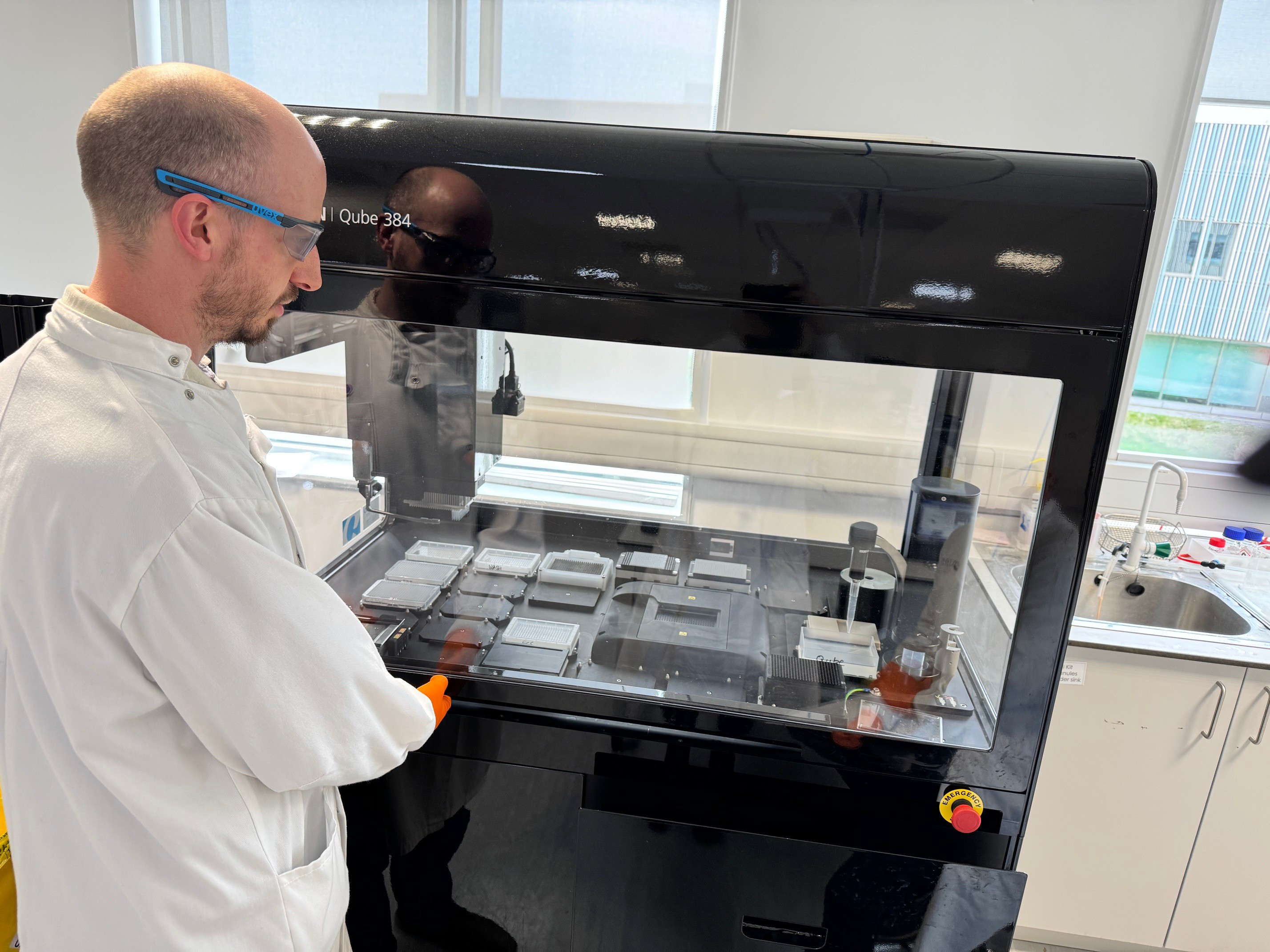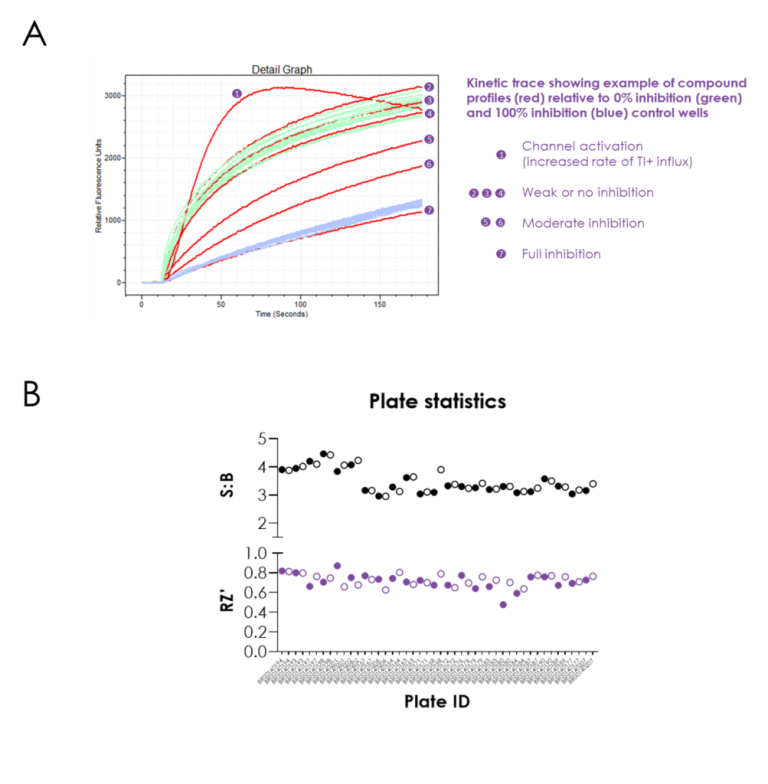Nicole describes her work at Metrion, the technologies she used and how they complemented her PhD research.
The high-throughput screening of vast numbers of compounds is pivotal to the drug discovery process. It is often an expensive and time-consuming process, which can return false positive results. What sets us apart is our specific high-throughput screening knowledge and broad experience across multiple ion channel targets, enabling us to generate reliable, reproducible data and reduce the risk of costly downstream failures.
 Our ion channel high-throughput screening specialists can support with hit-finding campaigns, hit-to-lead activities, and lead optimisation, with follow-up selectivity profiling.
Our ion channel high-throughput screening specialists can support with hit-finding campaigns, hit-to-lead activities, and lead optimisation, with follow-up selectivity profiling.
Your project will be led by a Leadership Team with over 125 years of combined drug discovery experience, predominantly in the ion channel field. Once we have run your project, we will interpret the data, communicate the results clearly, and support your decision-making to best inform your screening strategy and accelerate development timelines.
Our complementary phenotypic and translational assays enable further, detailed characterisation of your lead compounds, helping you make informed choices in progressing your drug discovery programme with confidence and scientific rigour.
Custom cell line generation, assay development, and optimisation are also provided in-house, ensuring a seamless, integrated approach tailored to your unique programme goals.

Figure 1. Screening against V434L KCNC1 using thallium flux assay. Read the drug repurposing high-throughput screeningcase study about a recent project researching a rare de novo variant in the KCNC1 gene.
To support your medicinal chemistry programmes and structure-activity relationship (SAR) studies, we offer access to commercially available compound libraries from Enamine and Assay.Works.
Our approach enabled a long-term Kv1.3 screening project to expand medicinal chemistry SAR and successfully identify selective small molecule modulators by accessing high quality APC and ion channel expertise. Through this long-term collaboration with a pharmaceutical company, Metrion delivered: exceptional long-term reliability of the optimised primary target screen and counter-screen assays over the course of two years, bespoke development of cell lines, including support of complete gene family selectivity and species selectivity studies, wider selectivity studies including extended cardiac (CiPA) panel screening, and exploration of mechanism of action (e.g. closed, open or inactivated state block).

Figure 2: Physico-chemical property profile of Assay.Works library according to Lipinski’s Rule of 5 (left); Prediction of compound properties and drug-like features: Colloidal Aggregation, Permeability, Bioavailability, Solubility, PAINS.

Figure 3: Assay.Works compound sets and diversity metrics based on Bemis-Murcko clusters.
Nicole describes her work at Metrion, the technologies she used and how they complemented her PhD research.
We developed a high-throughput, electrophysiological assay of TREK-1 function to identify novel modulators. The assay was optimized to identify both activators and inhibitors, providing comprehensive mechanistic data for high value, limited supply screening libraries, such as the venom fraction library used in this study (Targeted Venom Discovery Array, T-VDA, Venomtech, UK).